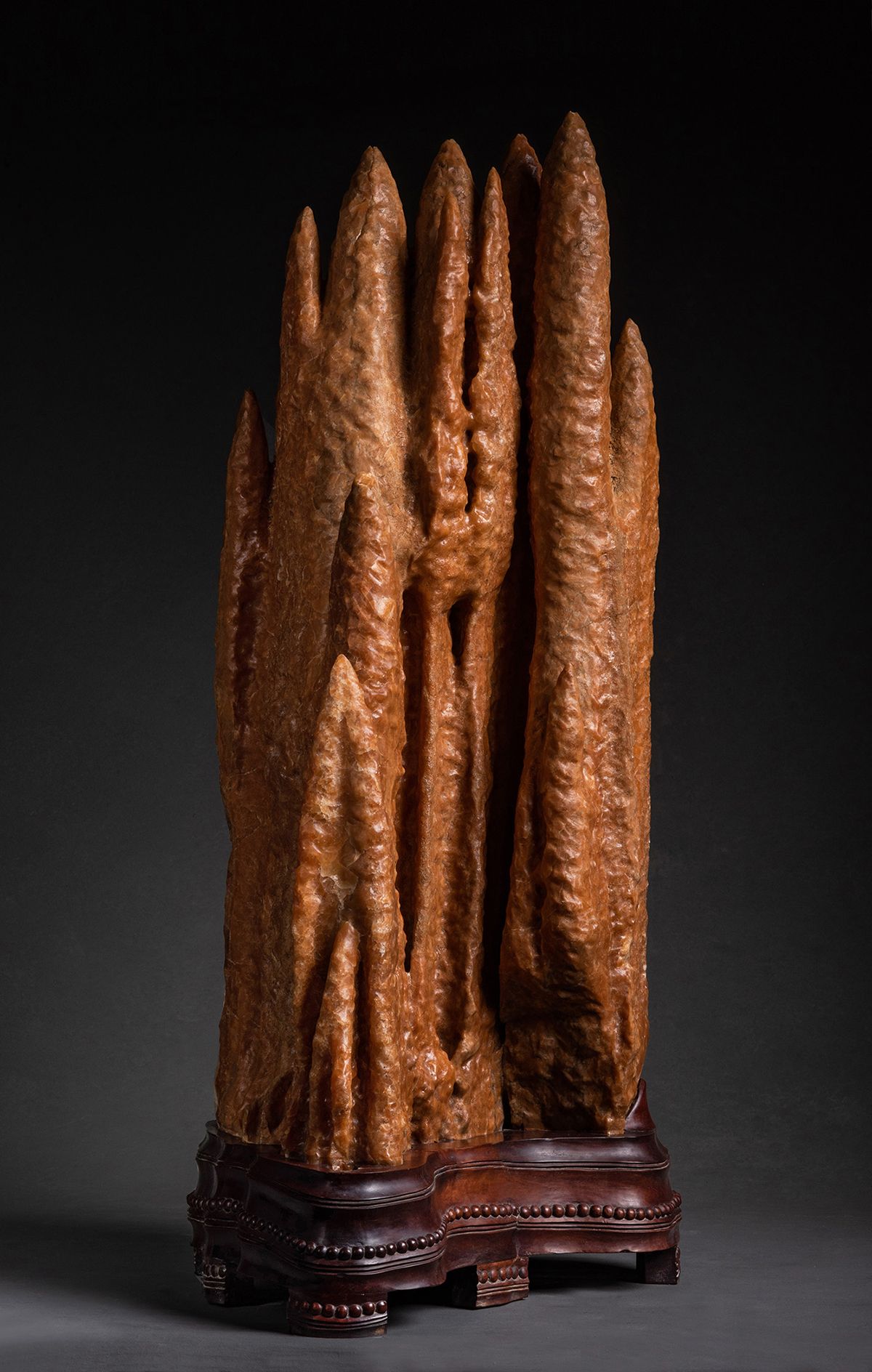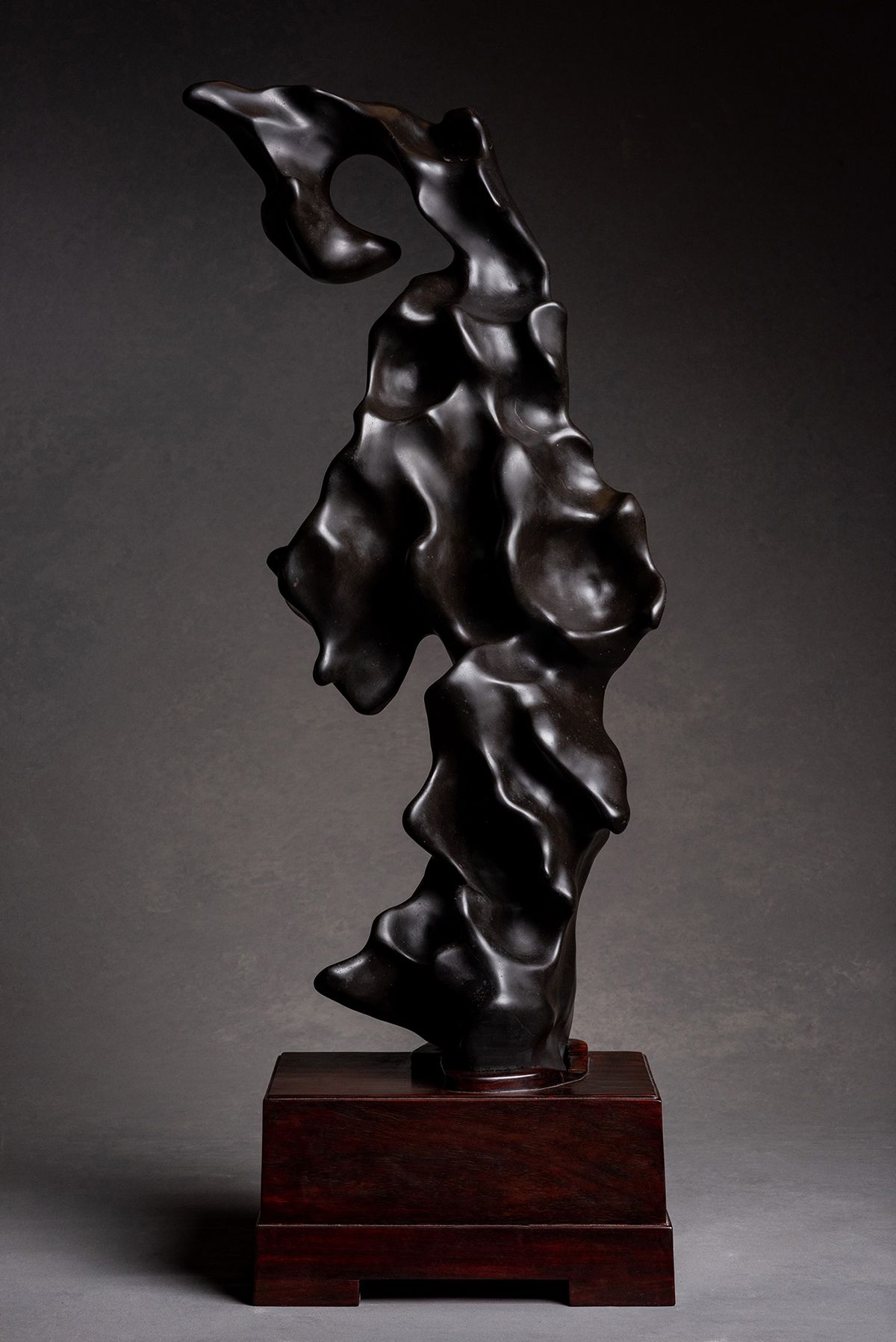A Gift of a Lifetime: Kemin Hu’s Donation to the National Bonsai and Penjing Museum.
Description of the gift of 112 Chinese stones to the U.S. National Arboretum
By Thomas S. Elias, April, 2023 Photographs of individual stones by Stephen Voss
The National Bonsai and Penjing Museum at the U.S. National Arboretum (USNA) has been voted several years in a row as the most popular Washington, DC, tourist destination that is not on the National Mall. The current outstanding collection of bonsai, penjing, and related viewing stones in this world-class museum has expanded. A gift of 112 Chinese scholars’ stones was recently presented to the museum by Kemin Hu. Seventeen of these stones were previously in the collection of her late father, Hu Haokang, who shared his passion and connoisseurship of these stones with his daughter. With this gift, the quality and size of the museum’s viewing stone collection now becomes the finest assemblage of documented Chinese Scholars’ stones in the United States.
National Bonsai and Penjing Museum entrance and upper courtyard.
The Asian art of collecting, displaying, and appreciating unusual stones is ancient, dating back at least two thousand years. A good stone stirs the viewer’s imagination and evokes feelings of something greater than the stone itself. A stone’s form, with its varied crevices, wrinkles, holes, and myriad surface patterns, can excite, bewilder, and serve as an object for contemplation and meditation. Stone appreciation practice originated in China and spread to Korea and Japan. Much later, the practice was adopted by other countries throughout the world. Some of the first Chinese Scholars’ stones came to the U.S. over one hundred years ago, along with the importation of Chinese antiques. Japanese stones came to the U.S.A., soon after the introduction of bonsai, mainly after World War II.

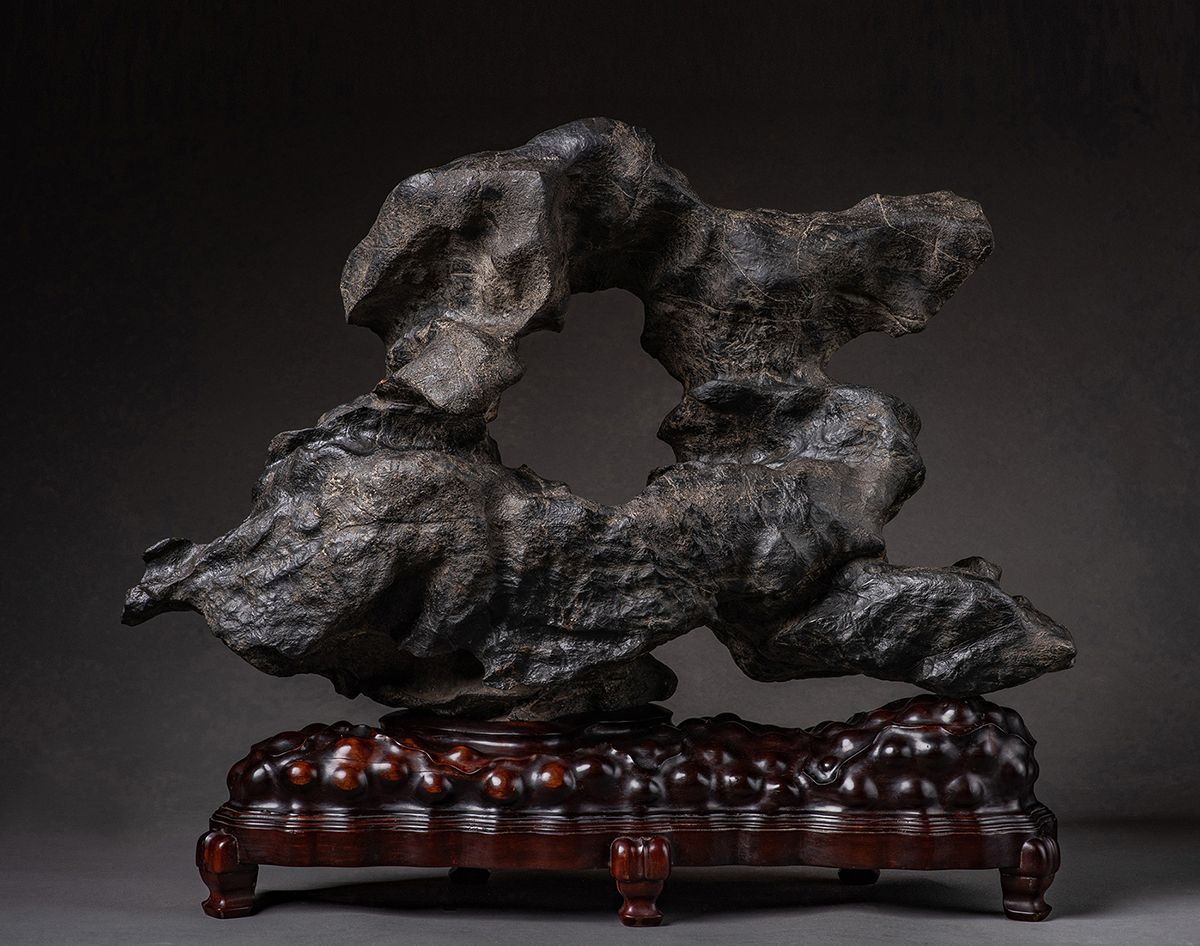
Hu’s gift was carefully assembled over many years and represents the scope of classical or traditional Chinese stone appreciation. The diversity of the stones donated adds considerable depth and importance to the USNA collection of Chinese Scholars’ stones. The classic abstract-shaped Lingbi stones she inherited from her father add to the feeling of oldness in these stones, a highly valued trait in stone appreciation. These are stones that one can use for contemplation. A collection of several stones that resemble distant mountains are be easy for novice viewers to understand and enjoy. Additional towering, narrow, vertically-oriental stones make dramatic statements. These show-stopper stones quickly grab viewers’ attention.
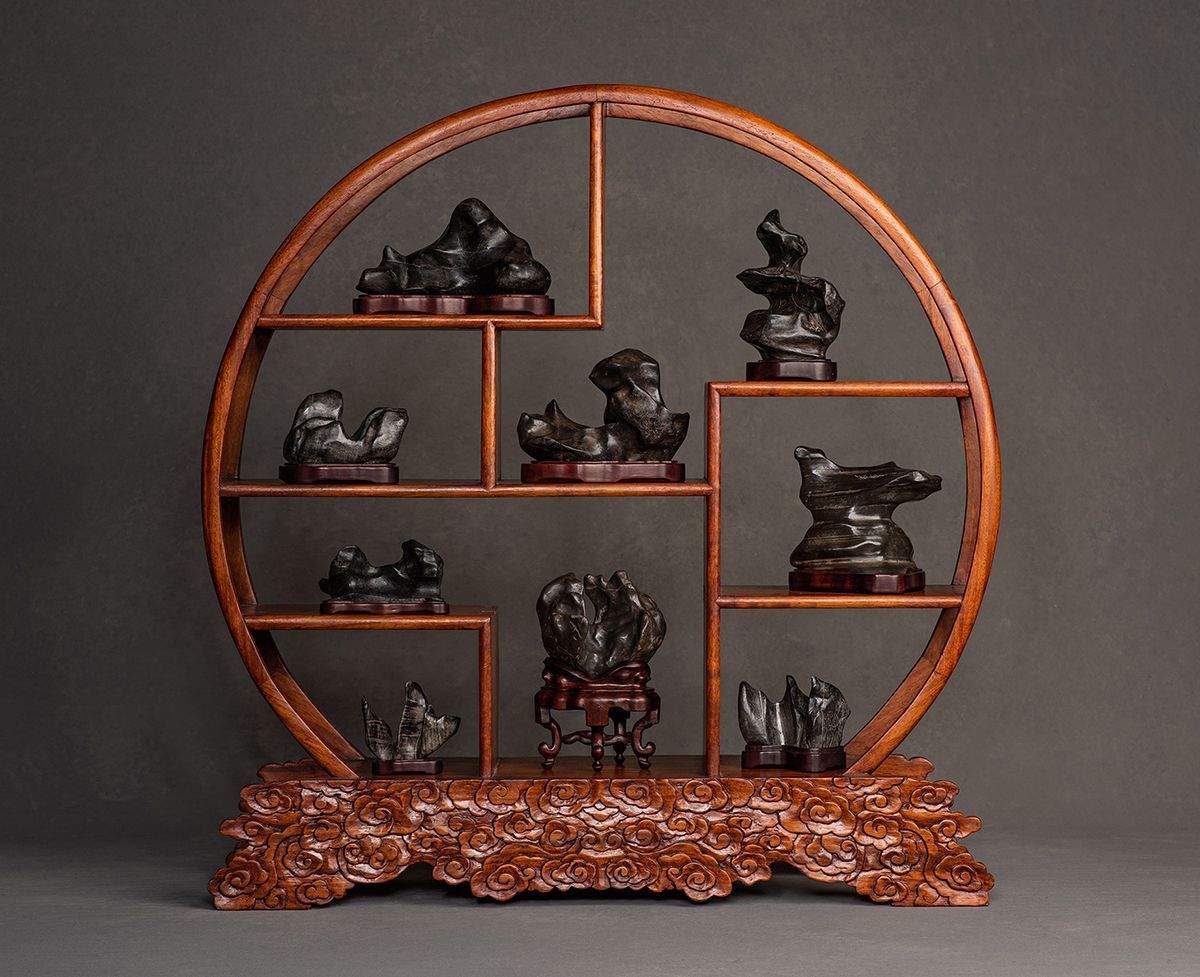
Hu included in her donation a series of stones that have only become part of the suite of revered Chinese Scholars’ stones since the late 1970s. Several smaller stones that are easily imagined as different animals are also present in these donated stones. Colorful stones, including a beautiful turquoise stone from Hubei province and a malachite stone from southeastern Guangdong province with deep rich colors exemplify the colorful stones that have been appreciated in China for centuries. A deep rich Yellow Wax stone and several Gobi Desert stones add to the range of polychromatic lithic formations found in Chinese stone appreciation practices. Fossils, gnarled pieces of root wood resembling a stone, and ceramic stone-like sculptures have also been a part of the lure of traditional and modern Chinese stones. Their inclusion in the donation is a welcome addition to the national collection.
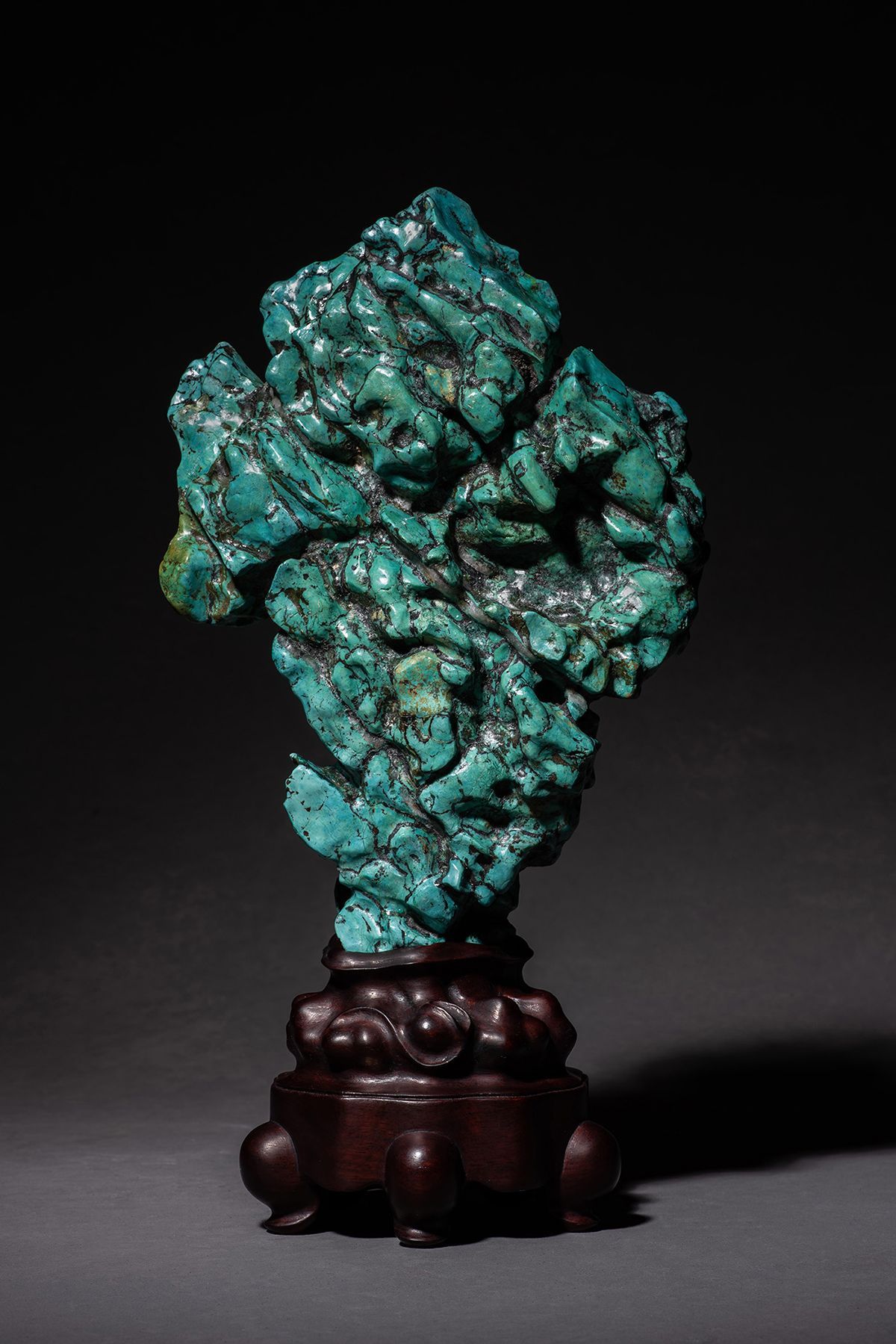
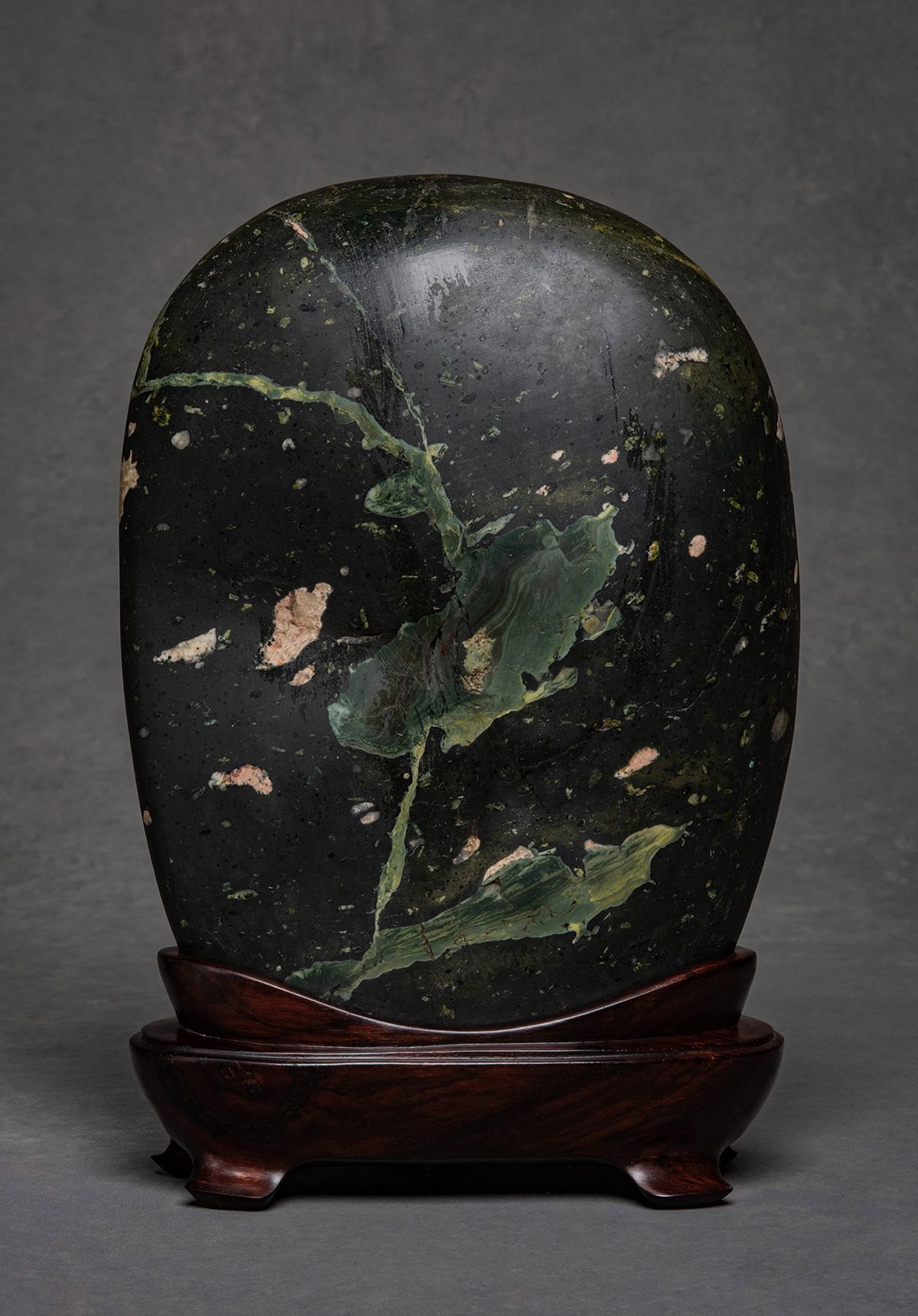

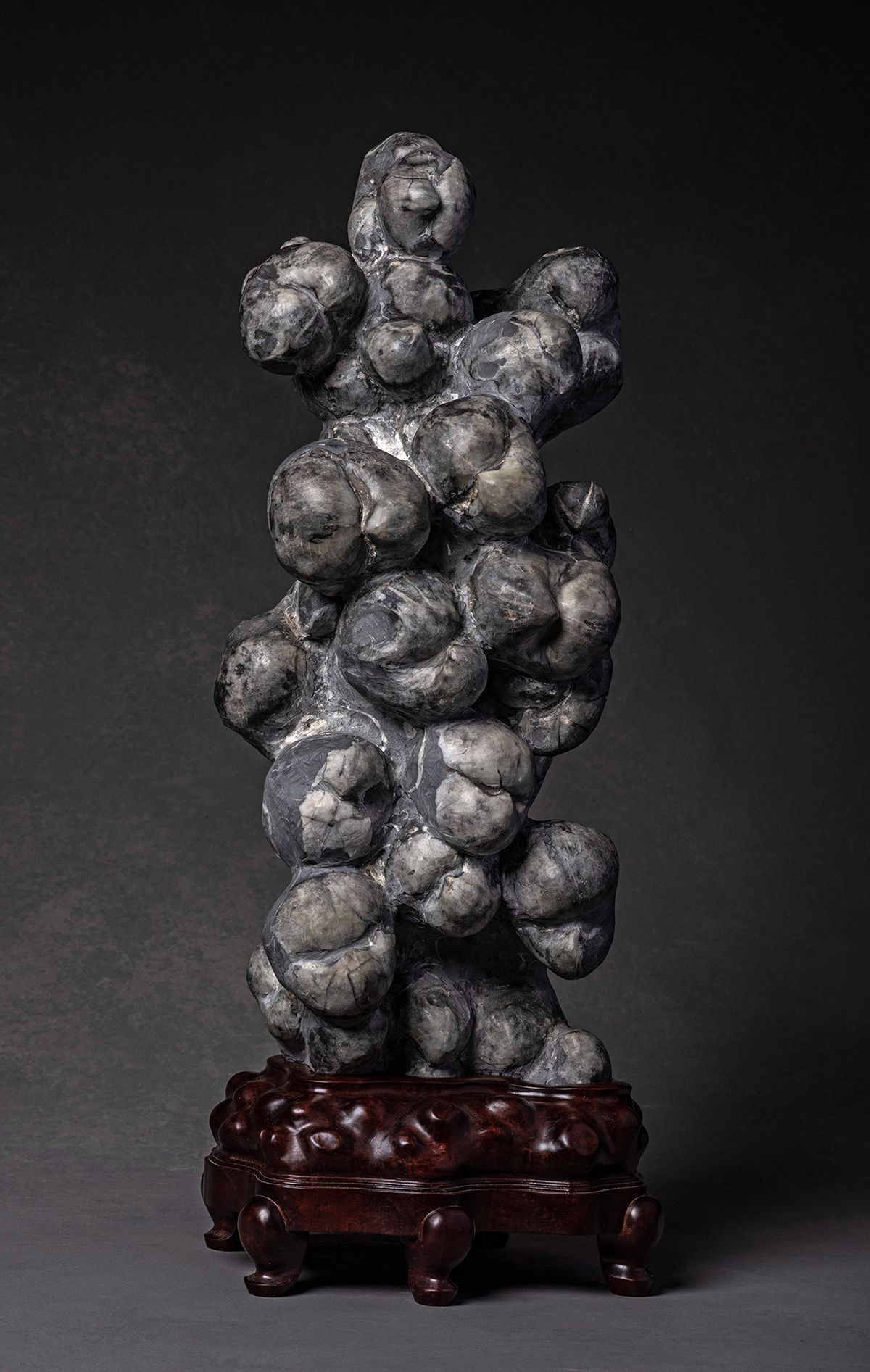
When these stones are displayed at the National Arboretum, they will have an enormous “wow” factor for people viewing them for the first time. Accompanied by quality interpretative materials, thousands of visitors will begin to understand what these stones represent as well as their importance. With this gift the National Arboretum and the National Bonsai and Penjing Museum have become an even greater treasure in the Washington, DC, area.
The Hu scholar stones will be exhibited in the International Pavilion within the National Bonsai and Penjing Museum periodically and as space allows. Dr. Richard Olsen, director of the arboretum, said a larger exhibit of Hu’s donation is planned for 2024. Eventually, the arboretum hopes to have a dedicated museum to store and display its extraordinary viewing stone collection. This will depend upon its ability to raise significant funds from the private sector. The National Bonsai Foundation (NBF), a private non-profit organization founded in 1982, is dedicated to supporting the National Bonsai and Penjing Museum. Over the last several decades, NBF has provided significant funding to expand the museum, helped acquire additional trees, stones, and related artifacts, published books, and hosted many special events to develop a greater awareness of the art of bonsai and stone appreciation. This successful government/private sector partnership has made the National Bonsai and Penjing Museum a world-class facility.
Presently, the Hu collection is safely stored in a temperature and humidity-controlled environment in the recently renovated administration building with only a few stones displayed at any one time. The future of the viewing stone collection at the USNA looks bright. Additional stones may be accepted in the future. According to Olsen, the arboretum has a committee to systematically review its stone collection and seek future documented stones that fill important gaps in their holdings. As a museum, only museum-quality pieces are sought.
Kemin Hu’s donation to the museum is the largest single donation in the history of the museum since it was founded in 1975. The first six stones gifted to the National Arboretum were government-to-government gifts, from Japan to the US, to commemorate the bicentennial of the United States in 1976.
The museum received its first Chinese stones in 1961 when Kemin Hu donated two Taihu stones, a Lingbi stone, a Julongbi stone, and a Mountain Lake stone. A few additional Chinese stones were received as gifts from other donors. Before Hu’s 2022 donation, the most significant gift was from Ralph Johnson of Indian Wells, California, who donated ten large Lingbi and Taihu stones in 2005 and 2006. Combined, the Chinese Scholars’ Stones collection at the National Bonsai and Penjing Museum is unmatched by any other public museum in the United States.
Looking ahead, two significant events will occur. In 2025, the museum will celebrate the 50th anniversary of the donation of fifty-three bonsai and the six excellent stones gifted from Japan to the United States. In 2027, the National Arboretum will celebrate its 100th birthday. We hope that the national viewing stone and bonsai communities will rally and support the National Bonsai and Penjing Museum and the U.S. National Arboretum.
The U.S. National Arboretum, established by Congress on March 4, 1927, is part of the Agricultural Research Service, the research arm of the U.S. Department of Agriculture. The research component of the arboretum primarily serves primarily the American nursery and floral industries. The horticultural component supports their research mission by maintaining valuable germplasm, but also serves the public sector functions as mandated by Congress.
People wishing to learn more about the National Arboretum and the National Bonsai and Penjing Museum can visit their website at www.USNA.usda.gov and the National Bonsai Foundation’s website at www.bonsai-nbf.org. The NBF website provides detailed information including schedules of special displays and programs.
For more detailed information about each of the donated stones, we recommend purchasing a copy of the excellent new book Cultivated Stones, Chinese Scholar’s Rocks from the Kemin Hu Collection at https://www.artbook.com/9798218020804.html. See the featured book review for more details about this book.


